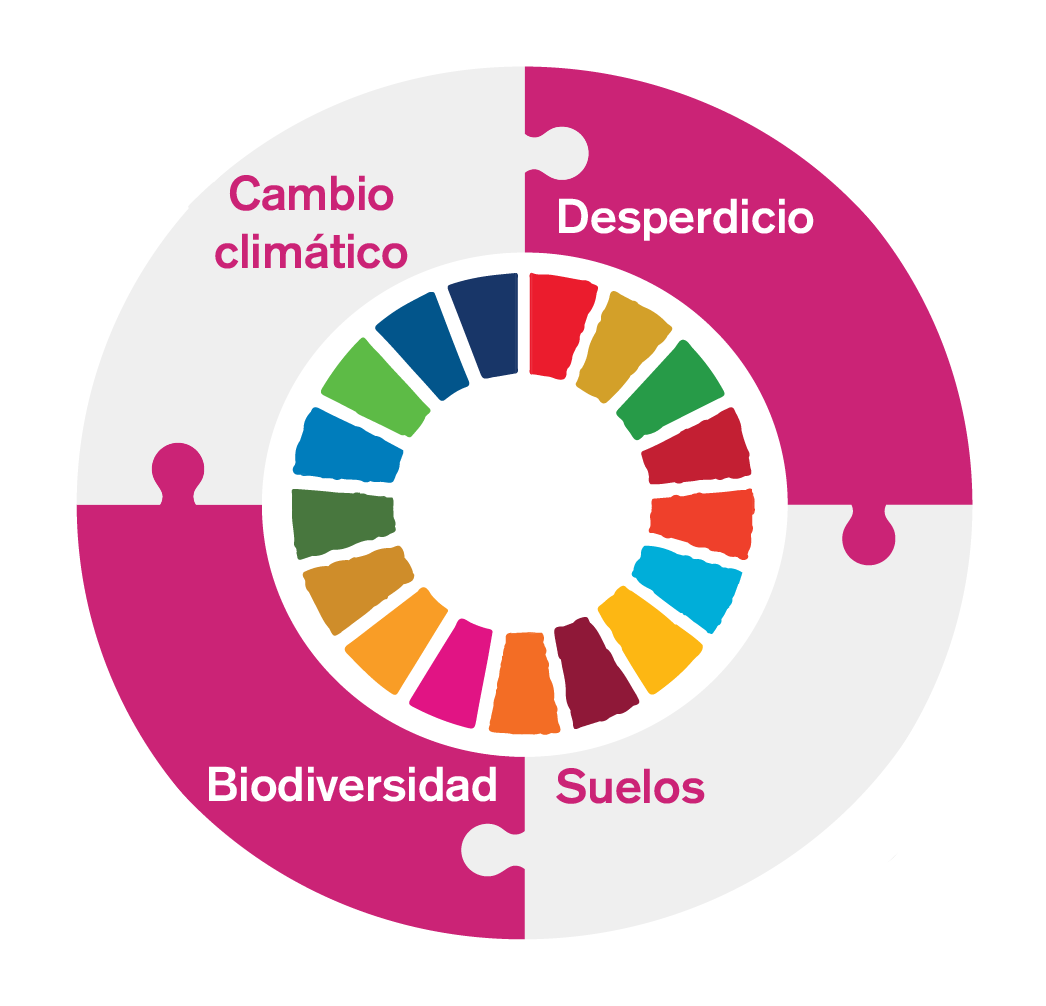Objectives and regenerative techniques
The transition to regenerative agriculture can be achieved by implementing the agronomic management measures described in the ZERYARegenerative protocol, which will help us to improve the objectives identified as major problems traditionally associated with farms.
In addition, these management measures are associated with different levels of implementation that allow us to quantify and compare the evolution and improvement of farm management.
Objectives ZERYARegenerativa

Soil erosion
Use of vegetative covers.
Use of organic matter
Optimization of fertilizer use
Water control measures
Soil microbiome analysis
Climate change
Carbon footprint calculation
Identification of improvement of the activities with the highest CO2 emissions.
Use of fossil and renewable energies
Efficient water consumption
Biodiversity loss and ecosystem degradation
Agro-ecological measures such as integrated pest management (IPM).
Decrease in the use of phytosanitary inputs
Respecting watercourses and contour lines
Food waste
Agronomic yield management.
Production surpluses
Continuous improvement cycle
Continuous improvement is a process that seeks to optimize crop yield and quality while preserving the environment and benefiting local communities. To achieve this, it is necessary to apply a series of principles and techniques that favor soil health, biodiversity, efficient water use and emissions reduction. These principles and techniques are known as regenerative agronomic practices.3
To facilitate the implementation of these practices, we have developed a checkpoint guide that producers can use as a reference. These control points cover different aspects of agricultural management, such as crop rotation, use of organic fertilizers, vegetative cover, biological control of pests and diseases, diversification of inputs, efficient consumption of resources, etc. Each control point has a specific objective, a detailed description and a way to evaluate the degree of compliance.
The guide is designed to be flexible and adaptable to the conditions and needs of each producer. The aim is not to impose a single model, but to offer a tool to help identify areas for improvement and plan the actions needed to achieve them. The guide also serves to monitor progress and results obtained, as well as to share experiences and lessons learned with other producers.
Our purpose is to support producers on their way to a more sustainable and profitable agriculture, which contributes to improving the work of their teams and the development of their territory.

Recent News
European policies for the protection of agricultural soil against erosion
The European Union has recently launched a series of measures to protect the quality and health of soils, which are essential for food production and biodiversity conservation. Among these measures are new policies[...]
Why does bare agricultural soil tend to lose moisture and is susceptible to salinization and solidification compared to soil with vegetative cover?
Bare agricultural soil is soil that has no plants to protect it from the action of the sun, wind and rain. This type of soil is exposed to a series of processes that[...]
Regenerative practices on stone fruit
Regenerative agriculture is a way of producing food that respects the environment and improves soil health. In stone fruit crops, such as peaches, plums and apricots, this practice can have benefits for both[...]






